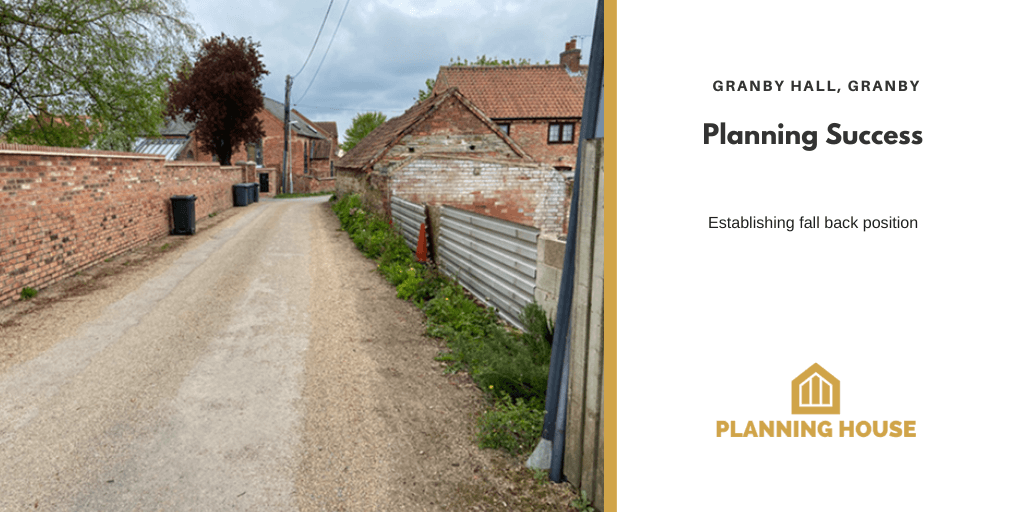Sometimes clients need help to define a strategy going forward, planning can be a bit like chess, and the best players need to know what strategy to use to achieve their goals…
The Background…
This project focuses around a planning application to retain a short section of new boundary walling, gates and also increasing the height of an existing front boundary wall at Granby Hall, Granby, was refused by Rushcliffe Borough Council last year.
The Council considered that the altered and new walling plus the new gate harmed the character and appearance of the Conservation Area including views into the site. As the applicant had already carried out the works an enforcement notice was served. The applicant came to Planning House to discuss a possible appeal.
The Strategy…
One of the grounds for appeal is that the requirement of the enforcement notice is to reduce the wall to 1m actually goes beyond the original height of the altered wall (previously 1.4m). It is also our view that the completed scheme causes no harm to the character and appearance of the Conservation Area, views into the site towards the countryside or the street scene in general taking account of the previous boundary treatment and nearby buildings and boundary treatment and also a fallback position relating to 2m boundary treatment that could be achieved within the site utilising permitted development rights.
To give strength to the fallback position argument, a Certificate of Proposed Lawful Use or Development (CLOPUD) was submitted by Planning House to demonstrate that a rather unattractive 2m fence and gate with concrete gravel boards and posts could be erected a few metres back from an existing wall of ‘up to 2m in height’ should the client be made to reduce the existing good quality wall and gates to 1m only. Such a boundary would be visible from the road and within the streetscene and completely block the views across the site that the local planning authority wish to retain. Its overall visual impact would be worse than allowing the completed wall and gates to stay.
The Fallback Position…
The Certificate of Lawful Development has now been issued confirming that the boundary enclosure would be permitted development and could be implemented without planning permission. Having a certificate in place makes the fallback position far stronger than just an assertion within an appeal statement that such a fence would be permitted development.
Whilst the wall and gates are considered acceptable in any event by Planning House given their design, materials and setting, the fallback position should be a further material consideration that weighs in favour of the development such that the enforcement appeal should be successful.
Sometimes small interventions within an overall planning strategy can make a big difference!
Related Content
If you have a site which is within a Conservation Area take a look at our Practical Guide as it’s important to be aware of the dos and don’ts, which may vary depending on your local planning authority.
There’s nothing more frustrating than having an application denied. If that’s the situation you’ve found yourself in, our eBook Town Planning, The Basics…Appeals covers everything you need to know. We look at everything from your right of appeal, appeal types and processes, what you need to submit, who makes the decision etc.
If you’ve been served an enforcement notice, In eBook Town Planning, The Basics…Enforcement, also covers your recommended next steps.
If you need help with your next step in a development proposal, CONTACT US, we’re always happy to chat through a proposal.


